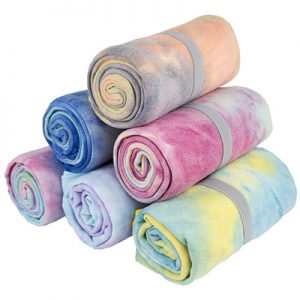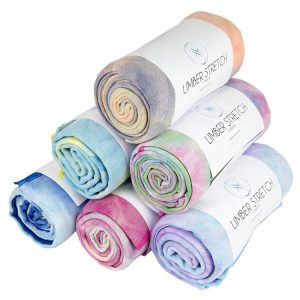Choosing the right yoga mat is essential for your practice as it provides the necessary support, stability, and comfort during your yoga sessions. With so many options available, it can be overwhelming to find the perfect yoga mat that suits your needs. Here’s a comprehensive guide to help you make the best choice:
- Thickness: Yoga mats come in various thicknesses, usually ranging from 1/16 inch to 1/4 inch. Thicker mats offer more cushioning, which is beneficial for people with sensitive joints or those who prefer extra comfort during their practice. Thinner mats are more portable and provide better stability, making them suitable for balance-based poses.
- Material:
- PVC: Most affordable and widely available, but not the most eco-friendly option.
- TPE: Environmentally friendly and non-toxic, made from biodegradable materials.
- Rubber: Offers excellent grip and is eco-friendly, usually made from natural tree rubber.
- Cork: Provides natural antimicrobial properties and a non-slip surface.
- Jute: Eco-friendly and offers a good grip, but it can be rough on the skin.
- Microfiber: Offers a soft, suede-like feel, often used for hot yoga practices.
- Texture: Consider the texture of the mat as it impacts grip and comfort. Some mats have a smooth texture, while others have raised patterns for enhanced grip.
- Stickiness and Grip: Look for a mat with good stickiness to prevent slipping during poses, especially if you engage in hot yoga or sweaty practices.
- Size: Yoga mats come in various sizes, but the standard dimensions are around 68 inches long and 24 inches wide. If you’re taller, consider a longer mat to accommodate your height.
- Weight and Portability: If you travel frequently or attend classes outside your home, opt for a lightweight and easily portable mat.
- Durability: Check the mat’s durability to ensure it can withstand regular use without wearing out quickly.
- Price: Set a budget, but remember that investing in a high-quality yoga mat can significantly improve your practice experience and last longer.
- Eco-Friendly: If environmental impact is important to you, opt for mats made from sustainable materials and avoid PVC mats.
- Allergies: If you have latex allergies, ensure that the mat you choose is latex-free.
- Reviews and Recommendations: Read reviews and seek recommendations from experienced yogis to gain insights into the performance of specific mats.
- Try Before Buying: If possible, try out the mat before purchasing it to check for comfort, grip, and overall feel.
- Warranty: Some brands offer warranties on their yoga mats, which can give you peace of mind regarding the product’s quality.
- Cleaning and Maintenance: Consider how easy it is to clean the mat and whether it requires special care.
- Purpose: Different styles of yoga may benefit from different types of mats. For example, thicker mats are ideal for gentle yoga, while thinner ones work better for more dynamic practices.
Remember that the ultimate guide varies from person to person. What works perfectly for one individual may not suit another. Ultimately, the right yoga mat is one that aligns with your preferences, needs, and specific style of yoga practice.








